But Bosch was not as concerned. He knew that passion was a key element in any investigation. Passion was the fuel that kept his fire burning. So he purposely sought the personal connection or, short of that, the personal outrage in every case. It kept him locked in and focused. But it wasn’t the Laura syndrome. It wasn’t the same as falling in love with a dead woman. By no means was Bosch in love with June Wilkins. He was in love with the idea of reaching back across time and catching the man who had killed her.
The killing of June Wilkins was as horrible as it was cunning. The woman was bound hands and feet with a dog collar and a leash and then drowned in the tub. Her dog was treated to the same death. The autopsy showed no bruising or injuries on Wilkins suggestive of a struggle. But analysis of blood and tissue samples taken during autopsy indicated that she had been drugged with a veterinary paralytic. It meant that it was likely that Wilkins was conscious but unable to move her muscles to fight or defend herself when she was submerged in the water in the bathtub. Analysis of the dog’s blood found that the animal ith the anhad been drugged with the same substance.
A textbook investigation followed the murder but it ultimately led to no arrests or the identification of a suspect. June Wilkins had lived alone. She had been divorced and had one child, a college student who went to school in Philadelphia. June worked as an assistant to a casting director in an office in a building at Hollywood and Vine, but had been on a two-week vacation at the time of her death.
No evidence was found that she’d had an ongoing romantic relationship or that there were any hard feelings from a former relationship. It appeared to neighbors, acquaintances, coworkers and family members that the love of her life was her dog, a miniature poodle named Frenchy.
The dog was also the focus of her life. He was of pure breed, and the only travel Wilkins did in the year most recent to her death had been to attend dog shows in San Diego and Las Vegas, where Frenchy competed. The second bedroom of her bungalow had been converted into a grooming salon, where ribbons from previous dog shows lined the mirrors.
The original investigation was conducted by partners Joel Speigelman and Dan Finster of Wilshire Division. They began with a wide focus on Wilkins’s life and then narrowed in on the dog. The use of the veterinary drug by the killer and the killing of the dog suggested some connection to that aspect of the victim’s life. But that avenue soon hit a dead end when the detectives found no indication of a dispute or difficulty involving Wilkins in the competitive world of dog shows. They learned that Wilkins was considered a harmless novice in that world and was neither taken seriously by her competitors nor competitive in nature herself. The detectives also learned that Frenchy, though a purebred animal, was not a champion-caliber dog and the ribbons he took home were more often than not awarded for simply competing, not winning.
The detectives changed their theory and began to consider the possibility that the killer had purposely misdirected the investigation toward the dog show angle. But what the correct angle of investigation should have been was never determined. The investigation stalled. The detectives never linked the palm print on the bathroom wall to anyone and lacking any other solid leads the case was pushed into the wait-and-see pile. That meant it was still on the desk but the investigators were waiting for something to break-an anonymous tip, a confession or even another murder of similar method. But nothing came up and after a year it was moved off the table and into the archives to gather dust.
While reading through the binder Bosch had written down a list of names of people who had come up in the investigation. These included family members, neighbors and coworkers of the victim as well as acquaintances she encountered through veterinary services and the dog shows she attended.
In most cases Speigelman and Finster had asked for birth dates, addresses and even Social Security numbers while conducting their interviews. It was standard operating procedure. Their thoroughness back then would now help Bosch when he ran every name from the list through the crime computer.
When finished reading, Bosch closed the murder book and looked at his list. He had collected thirty-six names to run through the computer. He knew he had theen w he ha names and the palm print and that was about it. He could also run ketamine hydrochloride through the computer to see if it had come up in any other investigations since 1972.
He decided that if nothing came out of the three angles of investigation he would drop the case, admit defeat to his partner and press on to the next case that had a valid hook.
As he finished his coffee, he thought about the palm print. There had been no analysis of it other than to measure its location on the wall and have it ready for comparison to suspects that might come up in the investigation. But Bosch knew that there was more to it than that. If the print was sixty-six inches up the wall, that meant it was likely that the man who had left it was over six feet tall. He came to this conclusion because he knew that if the suspect leaned forward to brace himself while urinating, he would probably put his hand on the wall at shoulder level or slightly above. Add a foot in height for his neck and head and you have a man ranging from six two to six six in total height. A tall, left-handed man.
“That narrows it down,” Bosch said to himself, noting his own sarcasm.
He got up, dumped his coffee cup and headed out of the cafeteria. On the elevator up to five he thought about the times he had leaned his hand on the wall over a toilet. He was either drunk, middle-of-the-night sleepy or burdened by something besides a heavy bladder. He wondered which of these conditions had fit the tall, left-handed man.
Most of the police department’s civilian offices were on the fifth floor along with the Open-Unsolved Unit. He passed the unit’s door and went down to the Personnel Department. He picked up contact information on Speigelman, Finster and his old partner, Eckersly. In years past such information would be jealously guarded. But under order from the Office of the Chief of Police, detectives with the Open-Unsolved Unit were given carte blanche because it was part of investigatory protocol to contact and interview the original investigators of a case that had been reopened.
Eckersly, of course, was not one of the original investigators. He was only there on the morning they had found the lady in the tub. But Bosch thought it might be worth a call to see if he remembered that day and had any thoughts on the reinvestigation of the case. Bosch had lost contact with Eckersly after he completed his street training and was transferred out of Wilshire Division. He assumed he was no longer on the job and was not mistaken. Eckersly had pulled the plug at twenty years, and his pension was sent to the town of Ten Thousand Palms, where he was the police chief.
Nice move, Bosch thought. Running a small-town police force in the desert and collecting an LAPD pension on the side. Every cop’s dream.
Bosch also noted the coincidence of Eckersly now living in a town called Ten Thousand Palms and the fact that Bosch was currently running an angle through a database of ten thousand palm prints.
Rider was not at her desk when Bosch got back to the unit. There was no note of explanation left on his desk and he figured she had simply taken a break. He sat at her desk and looked at her laptop. She had left it on but had cleared the screen before leavingchifore le the office. He pulled the list of names out of the murder book and connected to the National Crime Index Computer. He didn’t have his own computer and was not highly skilled in the use of the Internet and most law enforcement databases. But the NCIC had been around for years and he knew how to run names on it.
Читать дальше
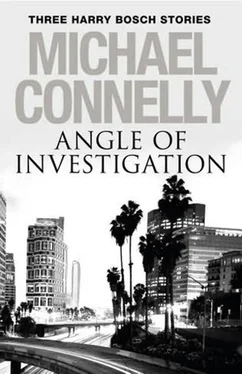


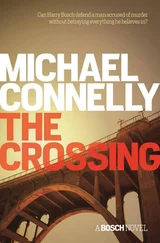

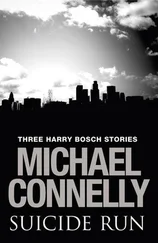
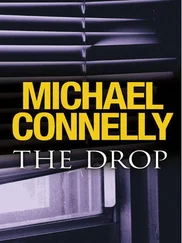



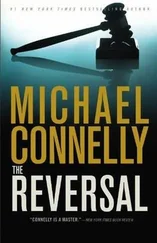
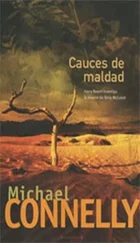
![Майкл Коннелли - The Night Fire [Harry Bosch - 22]](/books/405630/majkl-konnelli-the-night-fire-harry-bosch-22-thumb.webp)